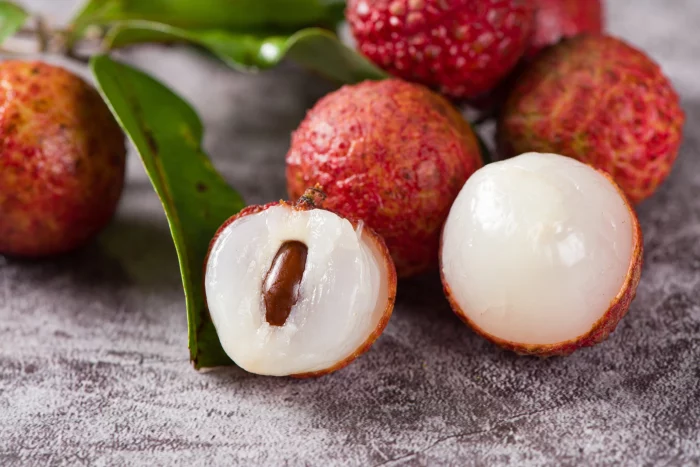Protein is an essential nutrient that plays a vital role in various bodily functions, including muscle development, tissue repair, and the production of enzymes and hormones. While animal products are often associated with protein, it’s important to recognize that vegetables can also be excellent sources of this essential nutrient. In this article, we will delve into the world of plant-based protein and explore a variety of vegetables that are rich in protein, making them great options for those seeking to incorporate more plant-based sources into their diet.
The Importance of Protein in a Healthy Diet
Protein is made up of amino acids, which are the building blocks of our body’s cells. It is crucial to consume adequate protein to support growth, repair, and maintenance of tissues. While animal-based protein sources like meat, poultry, fish, eggs, and dairy products are commonly associated with high protein content, vegetables can also provide significant amounts of this essential nutrient.
Understanding Protein Quality
Protein quality is determined by the composition of essential amino acids present in the food source. Animal-based protein sources are considered complete proteins as they contain all nine essential amino acids required by the body. However, some vegetables may be lower in certain amino acids, making them incomplete protein sources. Nevertheless, by combining different plant-based protein sources, individuals can obtain all essential amino acids and achieve a balanced protein intake.
Protein-Rich Vegetables
Here are several vegetables that are excellent sources of protein and can be valuable additions to a balanced and protein-rich diet:
1. Edamame
Edamame, young soybeans, are a protein-packed vegetable commonly consumed in East Asian cuisine. They are a complete protein source, containing all essential amino acids. Edamame is not only rich in protein but also a good source of fiber, folate, and vitamin K. Enjoy steamed edamame as a snack, or incorporate it into stir-fries, salads, and soups.
2. Lentils
Lentils are a type of legume that come in various colors, including green, brown, and red. They are not only a fantastic source of plant-based protein but also provide dietary fiber, folate, iron, and other essential nutrients. Lentils are versatile and can be used in soups, stews, salads, or even as a meat substitute in burgers and meatballs.
3. Chickpeas
Chickpeas, also known as garbanzo beans, are a staple in many cuisines, particularly in Mediterranean and Middle Eastern dishes. They are rich in protein, fiber, folate, and manganese. Chickpeas can be used to prepare hummus, added to salads, roasted for a crunchy snack, or incorporated into curries and stews.
4. Quinoa
Quinoa is a pseudo-grain that is not only gluten-free but also a complete protein source. It contains all nine essential amino acids, making it an excellent choice for vegetarians and vegans. Quinoa is versatile and can be used as a base for salads, added to soups, or served as a side dish instead of rice or pasta.
5. Spinach
While not typically thought of as a significant protein source, spinach contains a surprising amount of protein. It is also rich in vitamins A, C, and K, as well as folate and iron. Incorporate spinach into salads, sauté it as a side dish, or add it to smoothies for a nutritious boost.
6. Broccoli
Broccoli is a versatile cruciferous vegetable that provides not only protein but also a wide array of vitamins and minerals, including vitamin C, vitamin K, and folate. Add broccoli to stir-fries, steam it as a side dish, or roast it for a flavorful and nutritious addition to meals.
7. Brussels Sprouts
Brussels sprouts are another cruciferous vegetable that packs a punch in terms of protein content. They are also an excellent source of fiber, vitamin C, and vitamin K. Roast or sauté Brussels sprouts for a delicious and nutritious side dish, or shred them and use them in salads.
8. Asparagus
Asparagus is a spring vegetable that not only offers a unique flavor but also provides protein, fiber, folate, and vitamins A, C, and K. Grill or roast asparagus spears for a delightful side dish or incorporate them into omelets, salads, or stir-fries.
9. Peas
Peas, whether fresh or frozen, are a fantastic source of protein, dietary fiber, and essential vitamins and minerals. They can be added to a variety of dishes, including soups, stews, salads, and pasta dishes, to boost protein content and add vibrant flavor.
10. Kale
Kale is a leafy green vegetable that has gained popularity for its nutritional value. It contains protein, fiber, vitamins A, C, and K, and other essential nutrients. Enjoy kale in salads, sautés, or as an ingredient in smoothies and juices.
Combining Vegetables for Complete Protein
As mentioned earlier, some vegetables may be lower in certain essential amino acids, making them incomplete protein sources on their own. However, by combining different plant-based protein sources, individuals can obtain all essential amino acids and achieve a balanced protein intake. For example, combining legumes with grains, such as lentils with rice or chickpeas with quinoa, creates a complete protein source that can be easily incorporated into meals.
Conclusion
Vegetables can be valuable sources of protein, making them important additions to a balanced and protein-rich diet. Edamame, lentils, chickpeas, quinoa, spinach, broccoli, Brussels sprouts, asparagus, peas, kale, and other protein-rich vegetables offer a variety of flavors, textures, and nutritional benefits. Incorporating these vegetables into your meals can help diversify your protein sources and support a healthy and plant-based lifestyle. Remember to combine different plant-based protein sources to ensure a balanced intake of essential amino acids. So, embrace the power of vegetables and enjoy the delicious and protein-packed options they have to offer for your overall health and well-being.






















